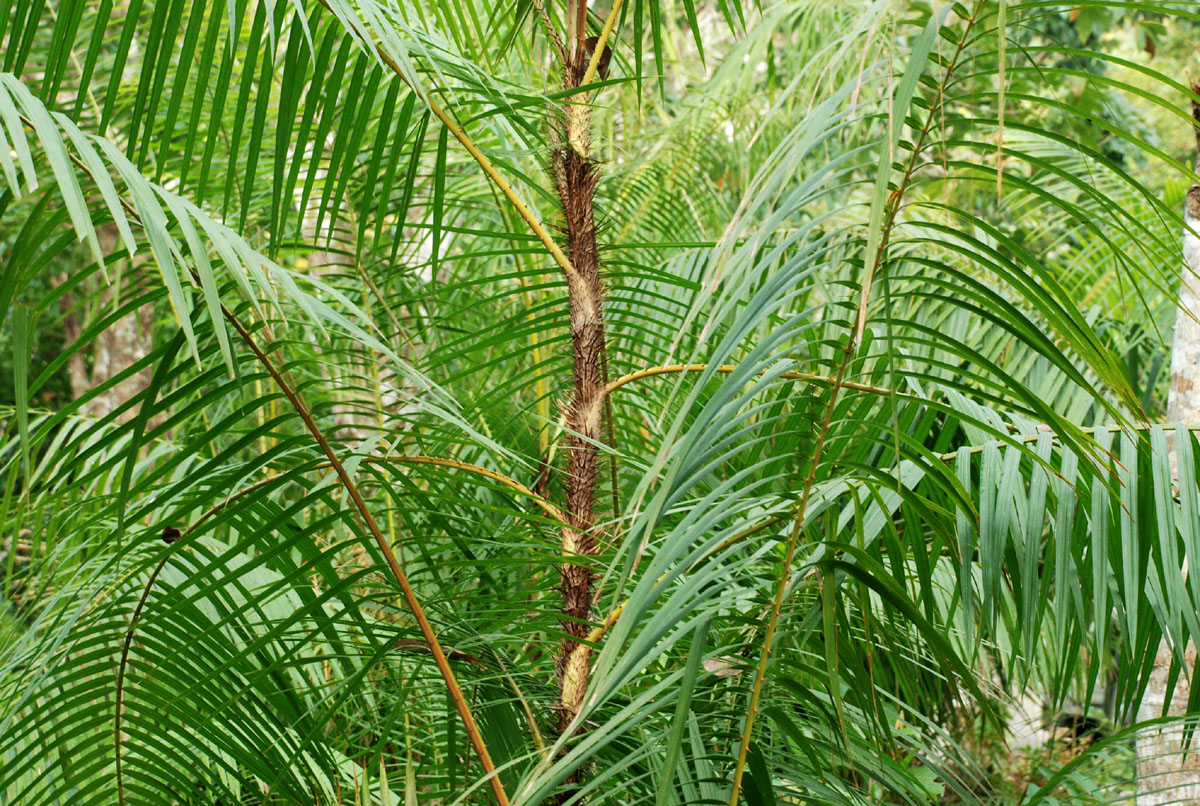INBAR is in charge of the Non-Timber Forest Products (NTFP) Global Partnership Programme, and is trying to identify case studies of successful NTFP production. One of the striking examples of NTFP use is the production of woven mats and baskets from leaves and strips of material from the stems of plants. Talking about weaving with NTFP made me reflect on my own memories of basket weaving in four of the countries where I lived
When I was young, I used to visit the Biesbosch, a large area of coastal wetlands in the southwest of the Netherlands. One of the traditional crafts from this part of the country was weaving baskets from young flexible willow branches. This is not a true NTFP, although the way willows are coppiced, allows them to continue growing.
We had a large basket for washing at home and our dog slept in a willow dog basket. Weaving baskets from willow branches is an old craft in the coastal wetlands of Europe, but due to high labour costs it is no longer economically viable in the Netherlands. Some master weavers still practice the trade for educational purposes, and in order to maintain a cultural heritage, and there are enterprises that have combines traditional basket weaving with other more general weaving of screens and partitions.
During my University Studies in the UK, I was fortunate to be invited to join the 1987 Royal Geographical Society expedition to Gunung Mulu in Sarawak, Malaysia. A few years later, I went back to the same place, as a member of the British-Malaysian Speleological exploration team that discovered the largest underground chamber in the world. The limestone mountains are now the Gunung Mulu National Park, a place well worth visiting.
During the expeditions, we were sometimes invited to the local longhouse to exchange ideas, and to cement our relationships with the Berawan people that traditionally lived in the area. During these visits, I admired the beautiful weaving examples, and I found out that this is a trade that is particularly well developed in Indonesia and Malaysia. Baskets, mats and wall hangings are made with exquisite patterns and colour combinations, using natural rattan fibres.
According to the Sarawak Museum, weaving and plaiting baskets isn’t just for convenience. In the Iban community for example, the ability to plait fine baskets would enhance the standing of a woman within the community. The baskets and other plaited items are made in their own design and technique that represents the ethnic identity. The following photo is an example that is kept in the Peabody Museum of Harvard University.
Rattan is the name for the roughly 600 species of palms in the genera Calamus, Daemonorops, and Korthalsia climbing palms of tropical Asia, all belonging to the family Palmae (palm family). Most rattans grow in Indonesia and neighbouring countries, although they are also found in Africa. Rattans are threatened with overexploitation, as harvesters are cutting stems too young and reducing their ability to re-sprout. Unlike bamboo, rattan requires a long time to regenerate, and unsustainable harvesting of rattan leads to forest degradation, affecting overall forest ecosystem services, and this is a serious problem also recognised by the weavers.
In my current position of Director-General of the International Network for Bamboo and Rattan, I am planning to develop a programme of activities for sustainable rattan management in partnership with our members that produce rattan. We are not alone, and will be working with other organisations that are promoting similar work. I will report on progress in this area later this year.
When I moved to Botswana in the early eighties, I discovered the basket weavers from Etsha in the Okavango Delta. They are true master weavers as well, using the leaves of another palm tree – the Mokola (Hyphaene petersiana) that grows in the Okavango Delta – and produce pieces of art. I bought several baskets during an interior design exhibition in Serowe in 1985, and have carried them around the world.
Commercialisation of the basket industry in the Okavango has led to changes in the population structure of the palms, but the Ngamiland Basket Weavers Trust, a local association set up mainly by women from the area is planting new trees to ensure a sustainable supply of raw materials. A private company Botswanacraft is also selling Botswana baskets from the master weavers in Etsha, and they fetch at least several hundred dollars per piece.
Now, I live in China and a few weeks ago I visited Qingsheng County in Sichuan Province in southern China. Master weaver Zhang showed us what he can do with bamboo! He makes the finest woven covers for porcelain vases and pots, some of which are sold to exclusive addresses in Europe. The photo below shows Master Zhang and me admiring one of his creations.
Master weaver Zhang also teaches local people how to make woven paintings, using different colours of bamboo strands. The strands are hand-produced, by splitting bamboo into small strips, which are then separated into 10 layers. These thin layers are again split into even thinner strands of bamboo, and they are used to make the intricate weavings.
I have been fortunate to see master weavers in action in several countries, and they all use Non-Timber Forest Products. The NTFP Global Partnership Programme may be able to find other masters weavers, or maybe you know of some. I would love to get in touch with them.







Hello Mr. Friederich,
Hi, may I send you an email directly? It is regarding your photos. THank you,
maricor